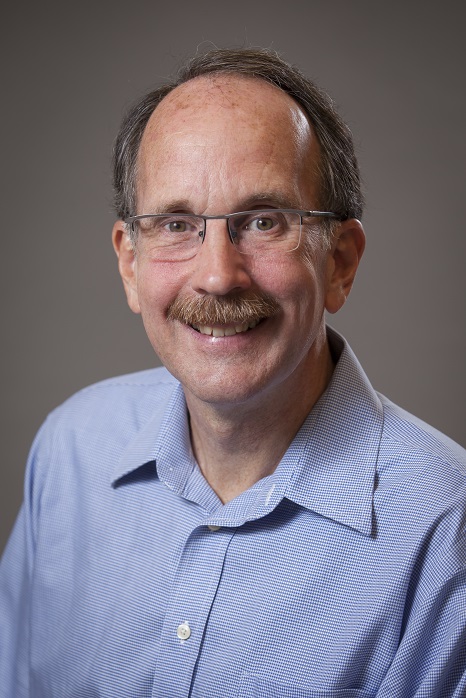Dr. David M. Birney (Retired)

Title: Professor
Education: Ph.D., Yale University, 1987
Postdoctoral Study, University of California, Los Angeles
Guest Professor, ETH - Zurich, Fall 2008
Research Area: Physical Organic & Mechanistic Chemistry
Office: Chemistry 232-C
Phone: 806-834-7167
Fax: 806-742-1289
Email: david.birney@ttu.edu
Webpages: Research Group
Chem 2303 (2013)
Principal Research Interests
In our group, we use high level ab initio and density functional calculations to provide fundamental insights into two classes of reactions, pseudopericyclic and pericyclic. We then design and conduct experiments to test the predictions of these calculations. The synergy between theory and experiment has provided insights and research directions that would not be possible from either alone.
Pseudopericyclic Reactions
The "conventional wisdom" of the orbital symmetry rules tells an organic chemist what to expect from a pericyclic reaction. Pseudopericyclic reactions violate all of these expectations of a pericyclic reaction, yet strictly speaking they are orbital symmetry allowed. The fundamental difference between the two is that in a pseudopericyclic reaction, there is not orbital overlap around the ring of breaking and forming bonds. This allows their transition states to have a planar geometry, and, often, very low activation barriers.The difference between a planar pseudopericyclic transition state and a non-planar pseudopericyclic one is illustrated in two animations of these reaction pathways. The dramatic differences in geometries between them are summarized below.
Familiar Pericyclic Reactions
Cyclic orbital overlap
Non-planar, non-least motion transition states
Pericyclic reactions can be allowed or forbidden, depending on the number of electrons
Concerted pericyclic reactions have lower barriers than stepwise alternatives. Barriers are due to enforced electron-electron repulsion
Novel Pseudopericyclic Predictions
Disconnections in orbital overlap
Planar (or nearly planar) transition states
All pseudopericyclic reactions are allowed; there are no anti-aromatic transition states
Pseudopericyclic reactions can have lower barriers than pericyclic alternative. There is no enforced electron-electron repulsion
Representative Publications
- "Competitive Pseudopericyclic [3,3]- and [3,5]-Sigmatropic Rearrangements of Trichloroacetimidates", Shikha Sharma, Trideep Rajale, Daniel K. Unruh, David M. Birney, J. Org. Chem. 2015, 80, pp 11734–11743, invited contribution, special issue on the Woodward-Hoffmann rules. 10.1021/acs.joc.5b01355
- "An Efficient Synthesis of 4-Substituted Coumarin Derivatives via a Palladium-catalyzed Suzuki Cross-coupling Reaction." Trideep Rajale, Shikha Sharma, Daniel A. Stroud, Daniel K. Unruh, Emily Miaou, Kimberly Lai and David M. Birney, Tetrahedron Lett. 2014, 55, 6627-6630, 10.1016/j.tetlet.2014.10.078
- "Experimental and Computational Studies on the [3,3]- and [3,5]-Sigmatropic Rearrangement of Acetoxycyclohexadienones; a Non-ionic Mechanism for Acyl Migration." Shikha Sharma, Trideep Rajale, David B. Cordes, Fernando Hung-Low, David M. Birney, J. Am. Chem. Soc. 2013, 135, 14438-14447, 10.1021/ja4077364
- "Optimizing Esterification of Safflower, Cottonseed, Castor and Used Cottonseed Oils." Tina P. Thomas, David M. Birney, Dick L. Auld, Industrial Crops and Products, 2013, 41, 102-106.
- "The Potential Energy Surface for (Retro-)Cyclopropanation – Metathesis with a Cationic Gold Complex", Alexey Fedorov, Laurent Batiste, Andreas Bach, David M. Birney, Peter Chen, J. Am. Chem. Soc. 2011133, 12162–12171, 10.1021/ja2041699
- "Theory, Experiment and Unusual Features of Potential Energy Surfaces of Pericyclic and Pseudopericyclic Reactions with Sequential Transition Structures" David Martin Birney, Curr. Org. Chem. 2010, 14, 1658-1668, invited contribution to special issue on Molecular Simulations in Organic Chemistry, 10.2174/138527210793563260
- "Cyclohexane Isomerization. Unimolecular Dynamics Of The Twist-Boat Intermediate" Khatuna Kakhiani, Upakarasamy Lourderaj, Wenfang Hu, David Birney, and William L. Hase J. Phys. Chem. A 2009, 113, 4570–4580, 10.1021/jp811208g
- "Multiphoton Infrared Initiated Thermal Reactions of Esters: Pseudopericyclic Eight-Centered cis-Elimination" Hua Ji, Li Li, Xiaolian Xu, Sihyun Ham, Loubna A. Hammad, David M. Birney, J. Am. Chem. Soc. 2009, 131, 528-537, 10.1021/ja804812c
Department of Chemistry & Biochemistry
-
Address
1204 Boston Avenue, Lubbock, TX 79409-1061 -
Phone
806.742.3067
